Fifine Tank3 Microphone Review – Panzer III
The $81 Fifine Tank3 is a super-built [seriously!] and good sounding dynamic microphone with a polar cardioid pattern that offers XLR and USB connectivities and headphone monitoring. Made for podcasting and YouTubing.
PROS
- Great sound
- Superb haptic and build
- Appealing design
CONS
- Some adapters to screw it onto “normal” tripods could have been included
In this Article
The Tank3 mic was supplied unsolicited by Fifine for my review and I thank them for that. You can get it directly from the company or from your local amazon website.
Introduction
Fifine are a company out of Shenzhen that specialize in – you may have guessed it – affordable microphones (since 2009), mainly for podcasting. I could not believe that I saw one in my family doctor’s office connected to her Mac the other day, most likely for dictation.
The company also put much weight on design — and some of their mics have won Red Dot awards, for example the Fifine AM8. I find the Tank3 optically extremely appealing, but that’s by far not all. It is a dynamic, unidirectional microphone with a cardioid polar pattern. What that means? Read on…
Why a Dynamic Microphone with a Cardioid Polar Pattern?
Most microphones fall into two categories, dynamic and condenser. Dynamic mics are more rugged and condenser mics are more sensitive but also more delicate. What makes dynamic mics more desireable for podcasting is that, unlike the condenser, they don’t need a battery or a 48 V Phantom Power box. Simply easier to use and don’t pick up unwanted background/handling noise. More robust.
The polar patterns relate to the microphone’s field sensitivity, that is the direction from which is accepts incoming sound. These standard dynamic mics with the round head used by rock stars on stage are omnidirectional. The Tank3 has a cardioid polar pattern (the most common kind), meaning, it is directional: it is most sensitive when you talk/sing into its front, less sensitive on the sides, and zero sensitive when you come from the back.
When you plot this in a polar pattern diagram, it yields a hear-shaped pattern, hence the name. Polar patterns make most sense when working in noisy settings and you don’t want to pickup ambient noise.
XLR vs. USB
The Tank3 has three ports, 1 for a monitoring headphone, and an XLR and USB for incoming data transfer. USB has the advantage that is is plug-and-play, no additional equipment needed. The Tank3 has an integrated Anolog-to-Digital converter (ADC, the opposite of a DAC) and that digital signal is carried into my MacBook via a USB-C cable. The MacBook’s own DAC re-converts the signal back into an analog. This is easy to use, but does not leave any options.
XLR is more versatile than USB. Using XLR, the digital signal can be run through special devices such as the Fifine SP1, where it can be manipulated, before it is being converted back into analog. This likely results in a better sound quality than the USB option. But it is less convenient. XLR microphones are studio standard.
Pick your poison.
Specifications Fifine Tank3
Type: Dynamic Polar Pattern: Cardioid Output Connection: USB type-C (mic end) to type-A 2.0 (computer end)/XLR USB Power Consumption: Voltage: 5±0.25 V, Current: 100 mA Bit Depth/Sample Rate: 16-bit/44.1k-48k Hz Frequency Response: 50-16k Hz S/N Ratio: >80 dB Max. SPL: 120 dB Sensitivity: -50±3dBV Headphone Monitoring Jack: 3.5 mm Impedance: >16 Ω Output Power: 10mW Frequency Response: 20-20k Hz S/N Ratio: 95 dB Shipping Weight: 1.3 kg Tested at: $81 Product Page: Fifinemicrophone.com |
Physical Things and Usability
In the box are the microphone and a USB-C to USB-A cable. The Fifine Tank3 absolutely justifies its name. As shallow as the joke sounds, it is built like a tank: very heavy (1.3 kg) with immaculate haptic. A seriously impressive device. The Sennheiser USB MKE 200 I tested is a plastic toy in comparison.
There are two knobs on the side, one for adjusting gain (input sensitivity) and the other for the volume of a monitoring headphone. Both are tight and extact when moved. This microphone, right out of the box, comes across like a quality studio device.
The button on top is illuminated green when the Tank3 is ready to record. When pushed down, it is red and the mic is muted. Strangely enough, it is the other way round in recording studios. There is a 3.5 mm headphone jack in the back as well as USB-C and XLR ports.
The Tank3 does not contain a battery and draws its electrical current from the computer it is connected to.
Apart from all the functionality, the Tank3 looks good with its minimalistic design and its clear lines. This may be of importance for such podcasters and YouTubers who need to show off a huge mic in front of their mouth.
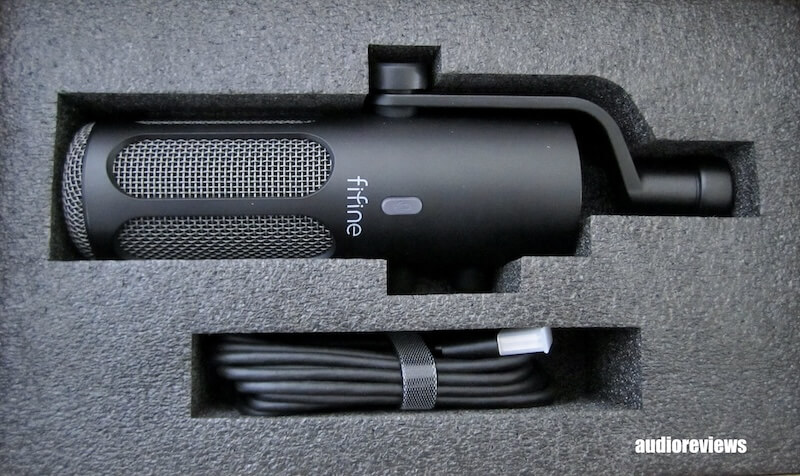
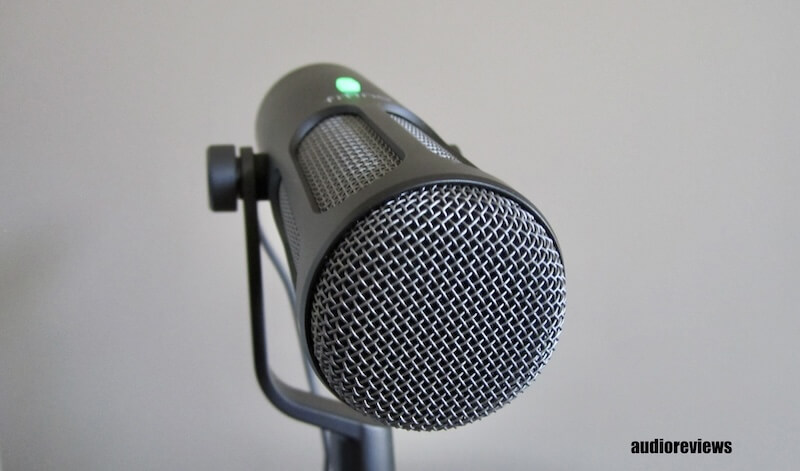
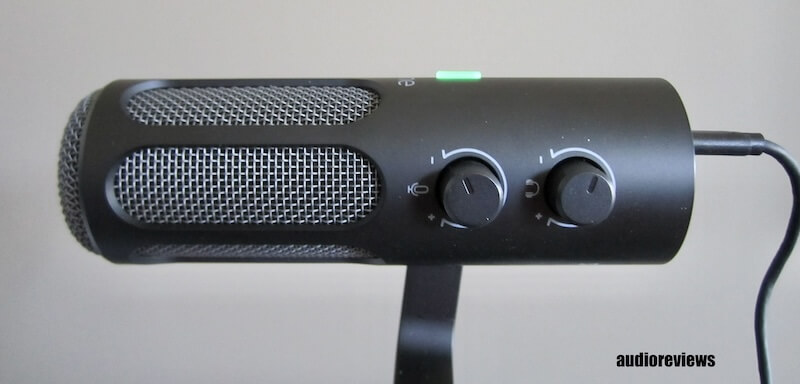
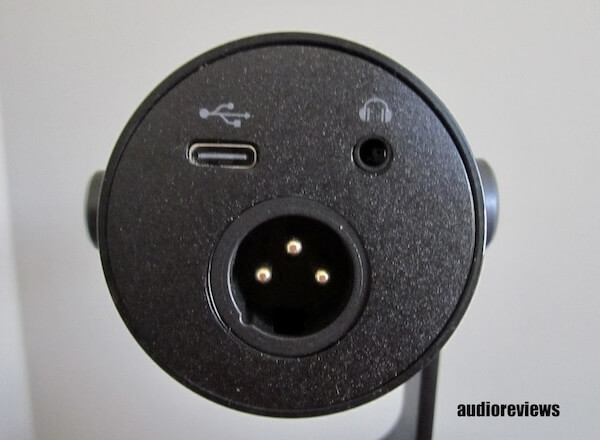
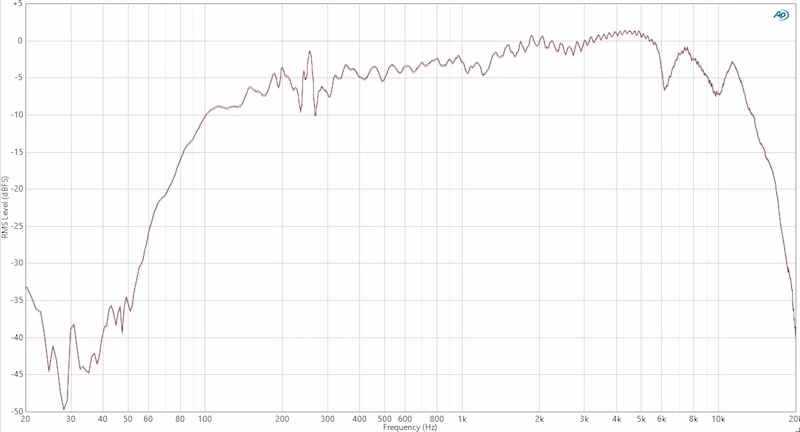
Sound

To my shame, I could not tickle the last bit of sound quality out of the Tank3 using the XLR connection as I don’t have any of these processing boxes for finetuning. I have always been a simple and lazy USB user connecting my mics straight into my MacBooks. Hence the output relies to a large extent on the quality of the components in my Mac. I am sure I could have added more body to my voice on the XLR route.
What you get here is an example of a USB recording in a less than ideal room with some echoes. You are the judge when it comes to sibilance etc. On the other hand, I don’t have to write endless (and useless) bla bla on the sound quality.
Just use your ears and take the sound sample with a grain of salt. Use your fantasy and evaluate, what you could produce with your own equipment.
2 Sound Samples: Fifine Tank3 via USC with MacBook Air: the first with 75% gain, the second with 50% gain:
My own quick judgement: very clear sound, but I wished it had a bit more to offer below 100 Hz (most dynamic microphones have such rolloff, though, including much more expensive models). It also keeps ambient noise (coming in from the sides) efficiently out.
Concluding Remarks
The Fifine Tank3 is an optically and haptically more than pleasing dynamic microphone with a cardioid polar pattern catering to podcasters and YouTubers. It offers XLR and USB connectivities. While I could not max out its quality using the XLR connectivity with some additional tweaking boxes, testing the USB option with my MacBook yielded very good sound. I really like all aspects of this mic, including the fact that it fits my budget.
Until next time…keep on listening!




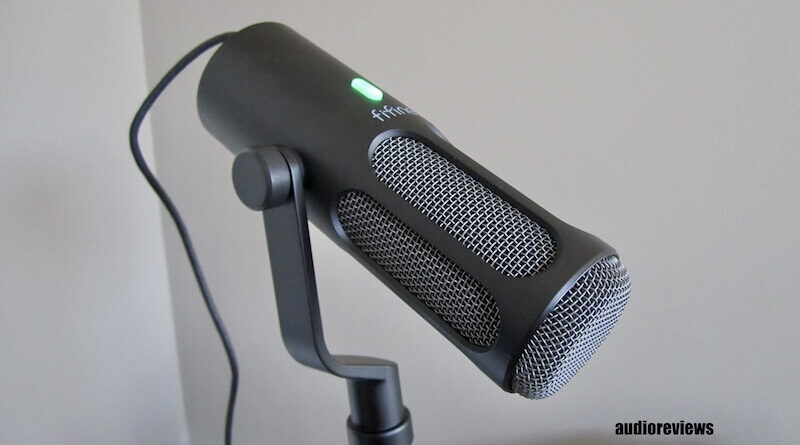

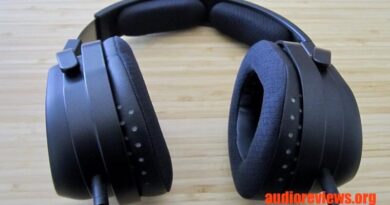

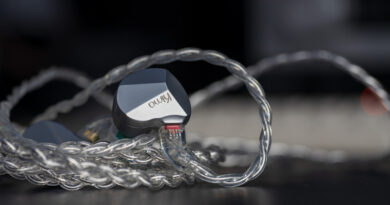
Almost all dynamic microphones have bass roll-off, Why do you consider it a drawback?
Good point! Thanks!